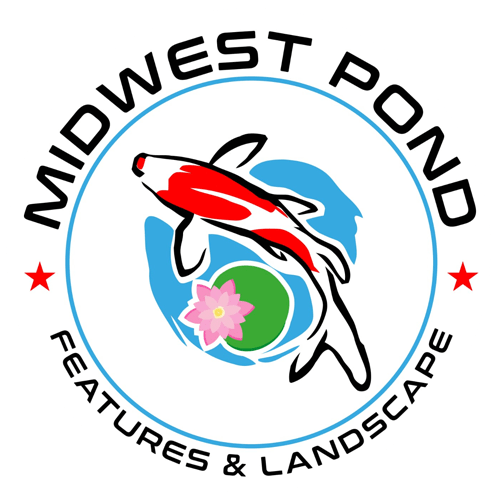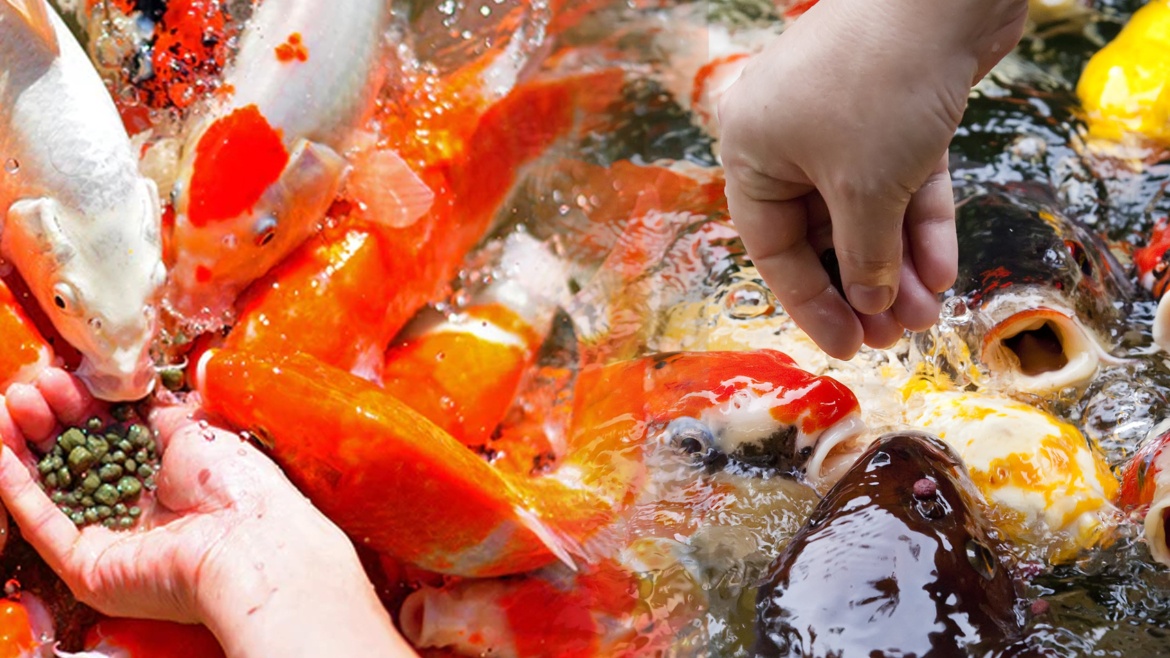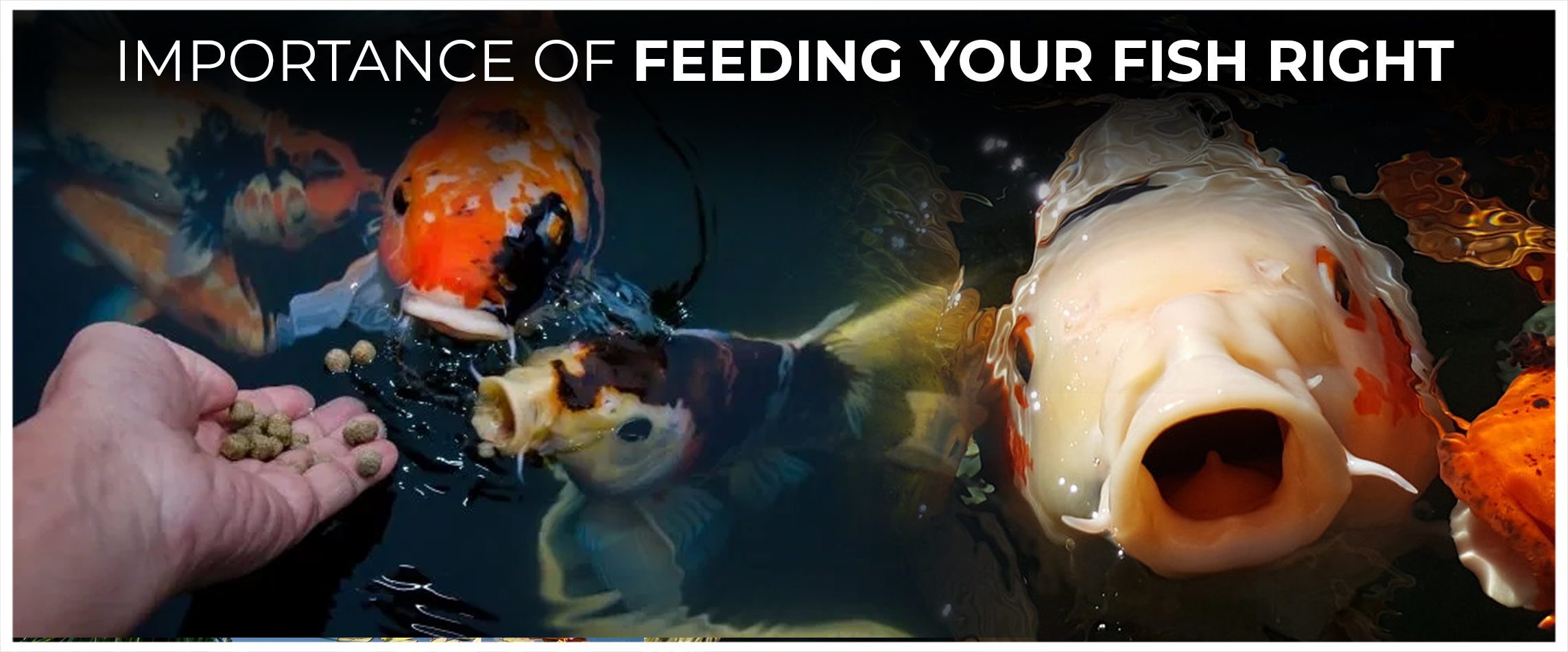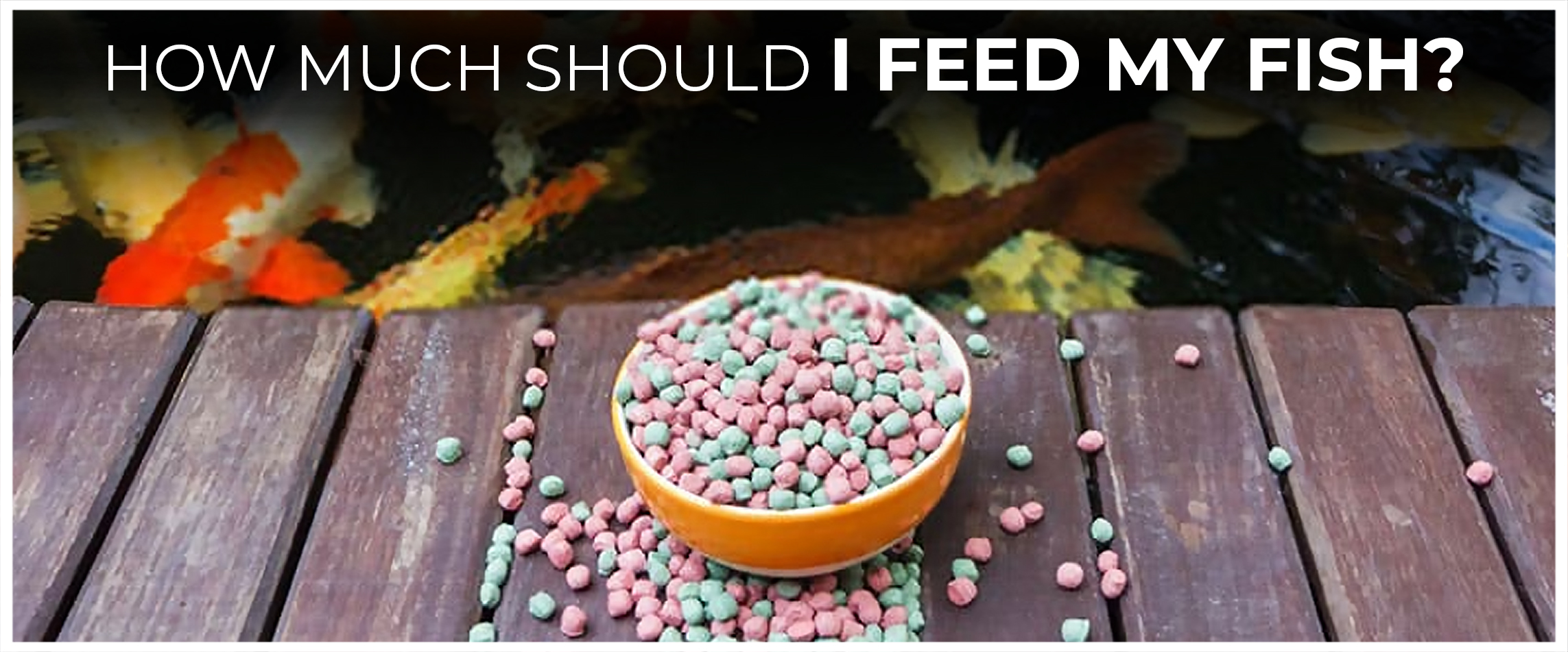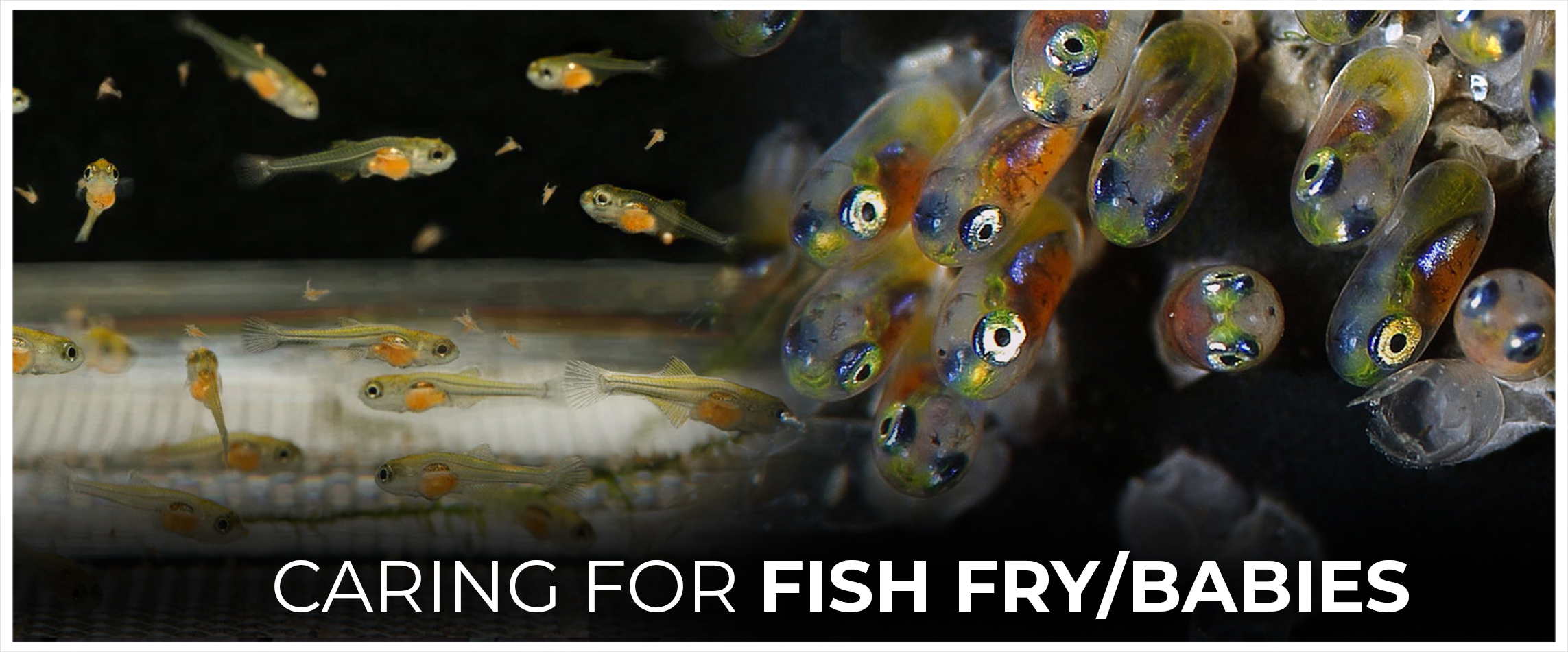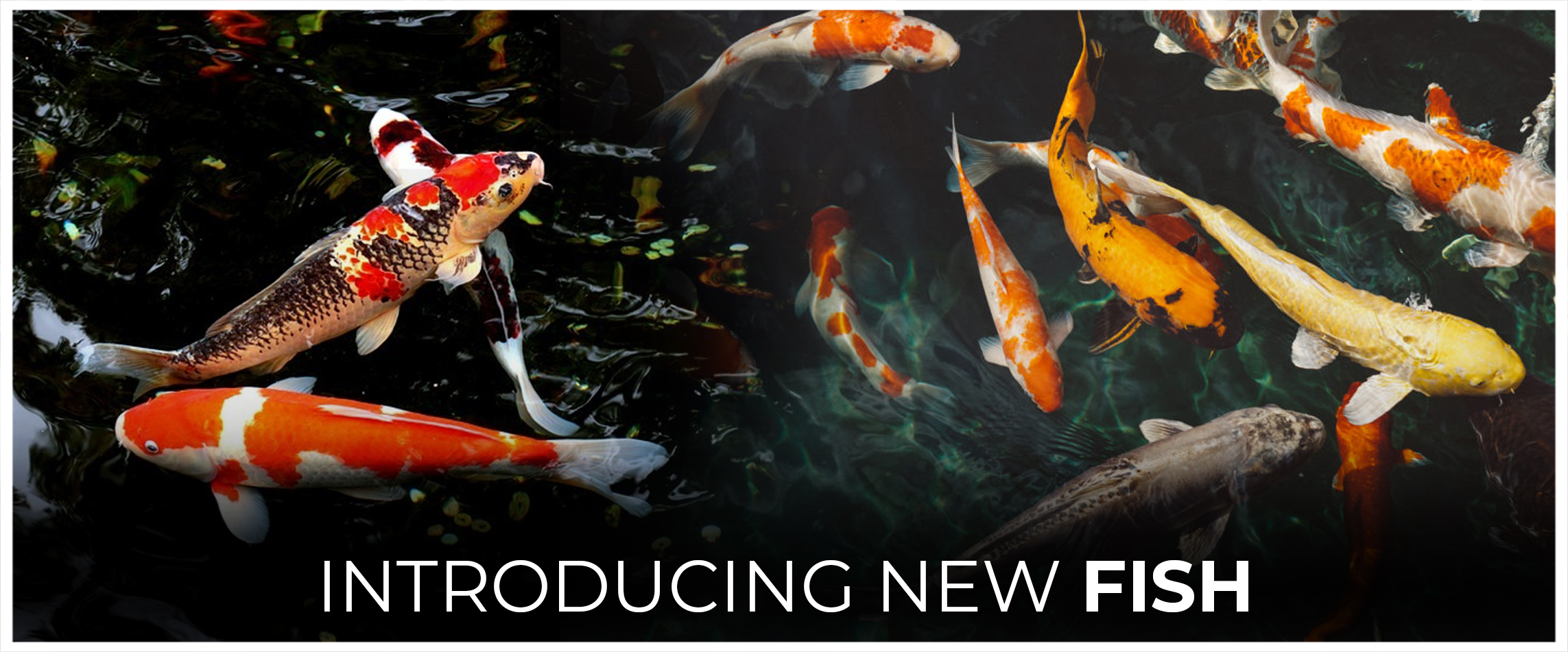(Podcast Episode)
How to Properly Feed Your Pond Fish for Vibrant Health
Having a pond in your backyard filled with colorful fish can be an enjoyable addition to your outdoor space. Koi and goldfish are familiar fish people like to keep in ponds.
Pond fish feed is essential for their health and growth. What to feed pond fish and what not? And what do pond fish eat? Here’s a guide on best practices for feeding pond fish.
Importance Of Feeding Your Fish Right
Proper nutrition is just as critical for fish as for any other pet. Feeding your pond fish an appropriate diet provides the proteins, vitamins, minerals, and lipids they need to stay healthy and thrive. Quality foods fuel proper growth and development, allowing fish to reach mature sizes and vivid colors.
Complete nutrition prevents deficiencies that could stunt fish or leave them vulnerable to illness. Food also impacts water quality – overfeeding fish causes contamination, while deficit feeding stunts the ecosystem.
Since pond fish entirely rely on their owner as a food source without natural forage, dedicating care and research into formulating the best diet gives your fish their most excellent shot at a high quality of life.
Their well-being and survival depend directly on the nutritional completeness of foods and feeding management. Invest in high-grade foods, offer a diverse menu, stick to disciplined portions, and continuously evaluate fish responses.
Choosing the Right Food
Always opt for high-quality food pellet or flake formulated for pond fish. Avoid cheap fish food filled with fillers. Look for pond fish food that contains:
- A high protein percentage should be listed as the first ingredient, making 35-40% or more.
- Vegetable matter and spirulina to promote color.
- Vitamins and minerals like vitamin C and calcium.
Proteins derived from fish, shrimp, and plant proteins like soybean meal are best. Wheat germ is also a quality binding ingredient. If feeding pellets, choose an appropriately sized pellet for your fish. More giant koi need larger fish pellets for ponds they can swallow, while smaller fish need tiny crushed pellets or flakes they can eat.
How Much Should I Feed My Fish?
Pond fish should be fed the amount they can consume within 2-3 minutes, 1-2 times per day. It prevents excess uneaten food from sinking to the bottom of your pond and impacting water quality. A good rule of thumb is to feed approximately 3% of your fish’s body weight daily. So, if you have 10 pounds of fish in your pond, you feed about 1/3 of a pound of food daily.
Observe if your fish are hungry or aggressively pursuing food between regular feedings. Increase amounts if needed, but keep an eye on water quality. Overfeeding fish can lead to murky green water from excess nutrients. Consider cutting back if you notice green algal growth.
Where and When to Feed
Ideally, feed your pond fish in the same spot each day. It can be from your hand, the pond’s side, or in a particular corner. Feeding in different random locations can dirty the whole pond. Fish will learn to gather in their usual feeding area in anticipation of food.
It’s best to feed during daylight hours when fish are most active and can see the food. Especially for sinking pellets, this ensures your fish find it before it gets buried in the substrate. If doing two daily feedings, feed once in the morning and again in the evening.
Vary the Diet
Mix up food types in addition to high-quality pellets/flakes to give your pond fish variety. Offer treats like earthworms, crickets, chopped lettuce, or watermelon occasionally. It gives a more enriched diet and provides excitement during feeding. Introduce new foods slowly, however, to avoid upsetting digestion.
Your pond fish will thrive on their dietary regimen by choosing nutritious foods, offering proper amounts, and feeding on a consistent schedule. Paying attention to your fish’s appearance and behavior will help you adjust quantities and types of foods to meet their needs best. Enjoy observing your colorful pond pets grow!
Caring for Fish Fry/Babies
If you have breeding fish in your pond, you may have some baby fish (fry) to care for. Babies have higher protein demands to fuel fast growth. First, you’ll want to feed fry a specialty fish food designed for them 2-3 times daily.
Opt for a powdered fry starter food they can quickly eat and digest. Slowly introduce mini crushed pellets as they grow. You may need to feed in a separate netted-off nursery area so adults don’t outcompete babies for food. Ensure good water quality by performing regular water changes in fry-rearing areas.
Supplements
In addition to an essential diet, you can provide supplements to enhance health and coloration. Pond salt helps boost slime coats to protect from infections and injuries. Color-enhancing supplements contain carotenoids and ingredients like canthaxanthin to intensify orange and red hues. Garlic extract boosts immunity. Feed wheat germ or special gel foods in winter to maintain health when less active. Only provide supplements occasionally rather than with every feeding.
Seasonal Feeding Considerations
Feeding requirements can vary over the seasons due to water temperature fluctuations. In peak summer, when water is warmest, fish are most active and have higher metabolisms. It is when they’ll need more food – you may be able to bump feeding amounts up to 4-5% of body weight daily.
In contrast, metabolism and appetites decrease in winter. When water temps drop below 50°F, you’ll need to reduce feeding amounts, perhaps cutting back to just 1% of body weight daily. On frigid days, skip feeding altogether.
Spring and fall are transition seasons when water is moderate. Aim for around 2-3% body weight offerings. Always observe fish behaviors to see if more or less food is required.
Introducing New Fish
It’s best to have a quarantine tank when adding new fish to an established community. It keeps them isolated for weeks to check for illness and acclimate them to your water conditions. Feed isolating fish an anti-parasitic food containing metronidazole for at least two weeks before release.
Start with small amounts of their previous food when adding fish to a quarantine tank or new fish directly into your pond. Over a few weeks, slowly transition them to the new diet you wish to feed for better acceptance. Sudden, complete food changes can be stressful. Monitor that all fish are getting enough to eat when newcomers are introduced.
Proper feeding is crucial for helping new fish stay healthy as they adjust to a new home. One can smoothly transition fish into your pond ecosystem with extra care and observation.
Common Feeding Mistakes
It’s easy for beginners to make feeding errors that may negatively impact pond fish health. Here are some common mistakes to avoid:
- Feeding too much – Leads to water quality issues.
- Feeding too little – Fish won’t get adequate nutrition.
- Tossing handfuls around the pond – Encourages fish to be finicky and wait for random food rather than gathering in one spot.
- Throwing in old food after absences – Fish need a fresh diet, and uneaten food quickly deteriorates water quality.
- Not adjusting amounts for seasonal changes – Feed less in colder months when metabolism slows.
You can avoid these feeding pitfalls by learning proper techniques and sticking to best practices.
Frequently Asked Questions
How often should I feed my pond fish and can you overfeed a fish?
Most pond fish do well being fed quality pelleted food once or twice daily during the warmer months. It’s generally best to feed an amount your fish can entirely consume within 2 to 3 minutes.
Observe whether your fish act hungry between feedings or have excess food left uneaten to determine if more or less frequent feedings are needed.
Overfeeding is the most common mistake. When you overfeed fish, the remains can clog your filter and break down into toxins that are quite harmful to fish.
Why do my fish always come to the surface looking for food?
Often, pond fish learn to associate people approaching the water as a cue for feeding time. They get in the habit of swimming to the surface in anticipation of being fed.
While enthusiastic eating is healthy, you don’t want fish developing poor pond manners and begging for handouts.
Try designating one specific feeding area rather than throwing food randomly. Consider cutting back slightly if fish seem overly obsessed with being hand-fed.
What do I do if I overfed fish and water quality declines?
Overfeeding leads to excess nutrients contaminating pond water, causing green, cloudy water. Reduce feeding amounts to minimum levels, manually remove uneaten debris, and perform water changes to dilute nitrates.
You may need to run filtration to help clear up the water temporarily. Observe fish closely to ensure their health isn’t compromised from diminished water quality after overfeeding.
Why won’t my fish eat when the water gets cold?
In cooler weather, a fish’s metabolism slows. Appetite declines once water temperatures drop below 50°F. While they may nibble, providing a complete, robust feeding regimen isn’t necessary, and food will accumulate uneaten.
You can safely cut back or stop feeding altogether on the coldest winter days until spring returns and the feeding drive rebounds. Monitoring seasonal temperatures guides appropriate feed adjustments.
Final Thoughts
Feeding fish in a pond is enjoyable yet critical. Providing your backyard pond fish with a nutritious, balanced diet is is essential to their health and vitality. By making intelligent choices about the types of food you offer and feeding best practices, you’ll set your fish up for success.
Quality fish pond food pellets and flakes full of protein sources should form the base of their meals. Supplement with treats like fresh veggies and insects for enrichment. Overfeeding fish is harmful. While feeding fish might seem straightforward, there are many considerations for getting it right.
Educate yourself on fish nutritional needs, continuously monitor water conditions, and let your pets’ health and actions steer adjustments. Now you know what to feed fish in a pond. Conscient feeding habits lead to happy, vibrant fish that add liveliness and beauty to your landscape.
